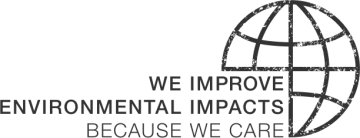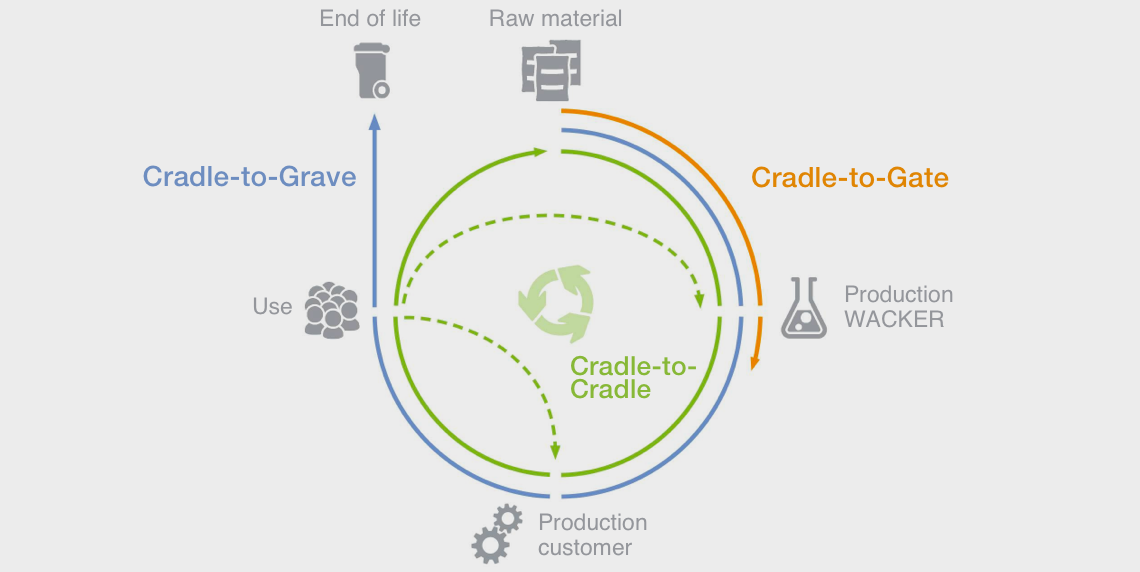Cradle-to-gate
A cradle-to-gate assessment examines the environmental impact of products up to the point when they leave the factory.

Truly sustainable products are determined not just by choosing and optimizing the most suitable production process, but also by what happens long before and long after that stage has been reached. Products impact the environment at every stage of their life cycle. The purpose of life cycle assessment at WACKER is to keep optimizing that impact.

The fate of a product and its impact on the environment are decided as soon as it embarks on its journey. WACKER uses life cycle assessments to optimize the environmental impact of its products right from the start. Because we believe that a happy ending for our climate needs the right beginning.

A cradle-to-gate assessment examines the environmental impact of products up to the point when they leave the factory.
A cradle-to-grave assessment focuses on the environmental impact of products up to the point of disposal.
WACKER is striving to bring about a circular economy – and that means conducting cradle-to-cradle assessments that draw sustained attention to products and/or their raw materials throughout their life cycle, up to the point of reuse.

To establish the sustainability contribution made by our products, we analyze and evaluate their impacts in a life cycle assessment (LCA) as per ISO 14040/44. The focus here is on determining the environmental impact of raw materials acquisition, transportation, usage of intermediates and production itself. The goal is to take the current cradle-to-gate analysis and extend it to the entire life cycle using meaningful data provided by suppliers, customers and end users.
The most important data for the life cycle assessment are the global warming potentials (GWPs) of the various value-adding processes at each stage of the product life cycle. These data serve as a basis for environmental decisions taken for the following reasons:
Discover here which of our products have undergone a life cycle assessment.
To the eco product portal